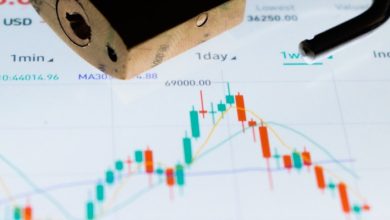Understanding the Risks of Margin Trading in Crypto

- What is Margin Trading in Crypto?
- The Allure of High Leverage in Crypto Margin Trading
- Common Pitfalls to Avoid in Crypto Margin Trading
- Regulatory Concerns Surrounding Margin Trading in the Crypto Market
- Risk Management Strategies for Margin Trading in Crypto
- Case Studies: Lessons Learned from Margin Trading Mishaps in the Crypto Industry
What is Margin Trading in Crypto?
Margin trading in cryptocurrency refers to the practice of borrowing funds from a broker or an exchange to increase the size of a trading position beyond what one’s own capital would allow. This means that traders can leverage their existing funds to potentially generate higher profits. However, it also comes with significant risks due to the amplified exposure to price fluctuations.
When a trader engages in margin trading, they are essentially taking on debt to increase their buying power. This can be a double-edged sword, as while it can lead to higher returns if the trade goes in their favor, it can also result in substantial losses if the trade moves against them. It is crucial for traders to have a thorough understanding of the risks involved before participating in margin trading.
One of the key risks of margin trading in cryptocurrency is the potential for liquidation. If the value of the assets being traded falls below a certain threshold, known as the maintenance margin, the broker or exchange may issue a margin call and force the trader to either deposit more funds or close out their position. This can lead to significant losses and potentially wipe out the trader’s entire account.
Another risk of margin trading is the increased volatility in the crypto markets. Cryptocurrencies are known for their price fluctuations, which can be exacerbated when using leverage. This means that traders can experience rapid and substantial gains or losses in a short period, making margin trading a high-risk, high-reward strategy.
In conclusion, while margin trading can offer the potential for higher returns, it also comes with significant risks that traders need to be aware of. It is essential to have a solid risk management strategy in place and to only trade with funds that one can afford to lose. By understanding the risks involved and being prepared for the potential outcomes, traders can navigate the world of margin trading in cryptocurrency more effectively.
The Allure of High Leverage in Crypto Margin Trading
One of the main attractions of engaging in margin trading in the world of cryptocurrency is the allure of high leverage. Leverage allows traders to control a larger position with a smaller amount of capital, potentially amplifying profits. However, it is essential to understand that high leverage also comes with significant risks.
While high leverage can magnify gains, it can also lead to substantial losses. The volatile nature of the cryptocurrency market means that prices can fluctuate dramatically in a short period, wiping out an investor’s position if the market moves against them. It is crucial for traders to be aware of the risks involved and to use leverage cautiously.
It is essential to have a solid risk management strategy in place when engaging in margin trading with high leverage. This includes setting stop-loss orders to limit potential losses, diversifying your trading portfolio, and only using leverage that you can afford to lose. By being disciplined and cautious, traders can minimize the risks associated with high leverage margin trading in the crypto market.
Common Pitfalls to Avoid in Crypto Margin Trading
When engaging in crypto margin trading, there are several common pitfalls that traders should be aware of to minimize their risks and maximize their potential returns. By avoiding these pitfalls, traders can protect their investments and make informed decisions.
- Overleveraging: One of the biggest mistakes traders make is overleveraging their positions, which can lead to significant losses if the market moves against them. It is important to carefully consider the amount of leverage used and not to exceed a comfortable risk level.
- Lack of Risk Management: Another common pitfall is failing to implement proper risk management strategies. Traders should set stop-loss orders to limit potential losses and use take-profit orders to secure profits. Without these measures in place, traders may expose themselves to unnecessary risks.
- Ignoring Market Trends: It is essential to stay informed about market trends and developments in the crypto space. Failing to do so can result in missed opportunities or making trades based on outdated information. Traders should conduct thorough research and stay updated on the latest news.
- Emotional Trading: Making decisions based on emotions rather than logic can lead to poor outcomes in margin trading. Fear and greed can cloud judgment and result in impulsive actions. Traders should remain disciplined and stick to their trading plan to avoid emotional pitfalls.
- Not Diversifying: Concentrating all investments in a single asset or market can increase vulnerability to fluctuations. Diversifying a portfolio across different cryptocurrencies or trading pairs can help spread risk and reduce exposure to volatility.
Regulatory Concerns Surrounding Margin Trading in the Crypto Market
There are significant regulatory concerns surrounding margin trading in the crypto market. With the volatile nature of cryptocurrencies, the potential for significant losses is high when engaging in margin trading. Regulators are particularly concerned about the lack of transparency and oversight in this area, as well as the potential for market manipulation and fraud.
One of the main challenges for regulators is the global and decentralized nature of the crypto market. This makes it difficult to enforce regulations and protect investors from unscrupulous practices. Additionally, the anonymity provided by many cryptocurrencies can make it challenging to track and regulate margin trading activities.
Regulators are also concerned about the lack of investor protection in the crypto market. Unlike traditional financial markets, there are often no safeguards in place to prevent investors from taking on excessive risk through margin trading. This can lead to devastating financial losses for individuals who may not fully understand the risks involved.
Risk Management Strategies for Margin Trading in Crypto
When engaging in margin trading in the crypto market, it is crucial to implement effective risk management strategies to protect your investments and minimize potential losses. Here are some key strategies to consider:
- Set clear stop-loss orders to automatically sell your assets if they reach a certain price point, helping to limit your losses.
- Diversify your investments across different cryptocurrencies to spread risk and avoid being overly exposed to the volatility of a single asset.
- Only trade with funds that you can afford to lose, as margin trading involves a higher level of risk than traditional trading.
- Regularly monitor the market and stay informed about news and developments that could impact the value of your investments.
- Consider using leverage cautiously and avoid overleveraging your positions, as this can amplify both gains and losses.
By implementing these risk management strategies, you can navigate the challenges of margin trading in the crypto market more effectively and protect your capital from significant downturns. Remember that while margin trading can offer the potential for higher returns, it also comes with increased risks that must be carefully managed.
Case Studies: Lessons Learned from Margin Trading Mishaps in the Crypto Industry
There have been several high-profile cases in the crypto industry where margin trading has led to significant losses for investors. These cautionary tales serve as important lessons for anyone considering engaging in margin trading with cryptocurrencies.
One such case involved an inexperienced trader who leveraged their entire portfolio to make a risky bet on a volatile cryptocurrency. When the market turned against them, they were forced to sell off their assets at a loss, wiping out their entire investment.
In another instance, a margin trader fell victim to a “margin call,” where the exchange automatically liquidated their position to cover potential losses. This abrupt liquidation not only resulted in a loss of funds but also left the trader with a negative balance that they were required to repay.
Yet another example is the case of a trader who borrowed funds to leverage their position in a promising ICO, only to see the project collapse shortly after. The trader was left with not only the loss from the failed investment but also the debt incurred from the borrowed funds.
These stories highlight the risks and potential pitfalls of margin trading in the crypto industry. It is crucial for traders to understand the mechanics of margin trading, set strict risk management protocols, and avoid overleveraging to prevent such mishaps from occurring.



